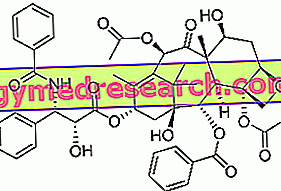
Its origin tendon splits under the tibial collateral ligament into three bundles that terminate on the tibia and femur.
The first part (descending) moves forward to fit on the posterior part of the medial condyle of the tibia.
The second part of the tendon (recurrent) rising towards the lateral condyle of the femur forms the popliteal ligament.
The third part (anterior) radiates in the anterior part of the medial condyle of the tibia (reflex tendon).
This subdivision into three parts of the insertion can be called a deep goose paw.
The semimembranosus is a biarticular muscle which with its action flexes and rotates the leg, extends, rotates and adducts the thigh. In the running action it has a role of pure antagonist during the final part of the thigh flexion on the pelvis with a flexed bust. The violent eccentric contraction that occurs at this stage subjects the semimembranosus to a high traumatic risk.
Together with the semitendinosus and the long head of the biceps femoris constitutes the muscular group called ischiocrurali. These three muscles share: origin (ischial tuberosity), innervation (tibial nerve), biarticularity and function (leg flexor and extensor of the thigh).
It is innervated by the tibial nerve (L4-S1).
| ORIGIN Ischial tuberosity |  |
INSERTION With a bundle on the posterior part of the medial tibial condyle (reflex and descending tendon), with another forms the oblique poplite ligament, with another it terminates on the anterior part of the medial condyle of the tibia (recurrent tendon) | |
| ACTION Extends and adducts the thigh; the leg flexes and rotates internally (knee bent) | |
| INNERVATION TIBIAL NERVE (L4-S1) |
| Upper limb | Lower limb | Trunk | Abdomen | Articles |



